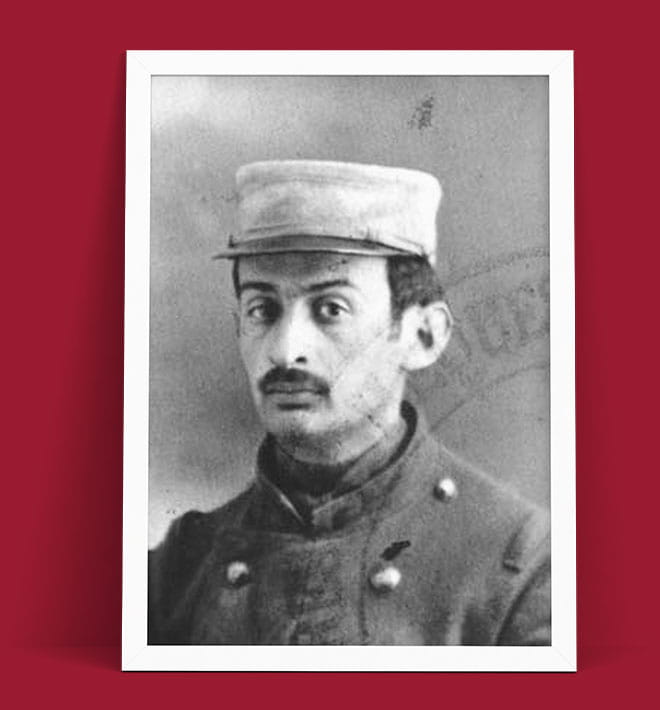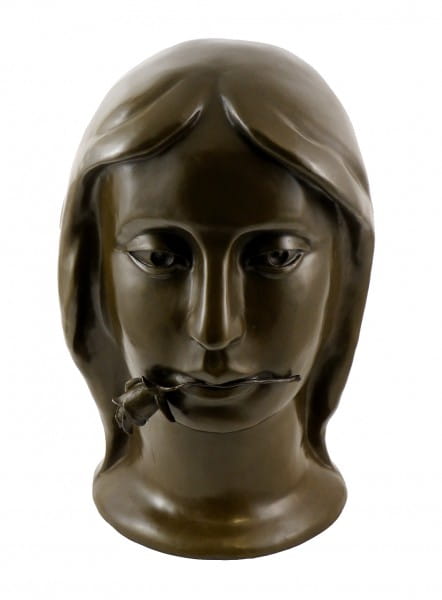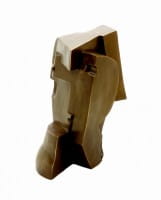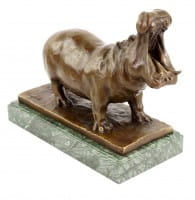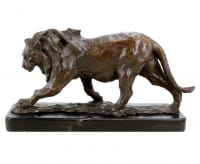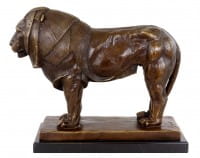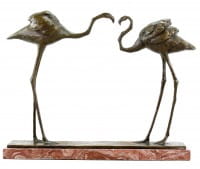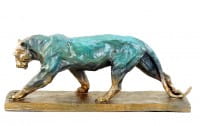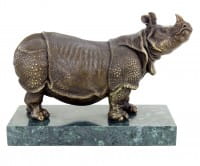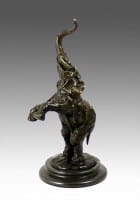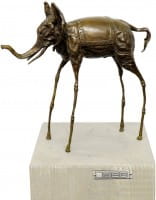Prices incl. VAT, free shipping worldwide
Ready to ship today,
Delivery time appr. 3-6 workdays










Product description
"Bronze Head - Girl with Rose - signed by Otto Gutfreund"
| Weight | 7,5 kg |
Bronze Head - Girl with Rose 1924 - Signed by Otto Gutfreund
Otto Gutfreund’s “Girl with Rose” (1924) stands as a rare testament to the evolution of cubism sculpture into a refined and lyrical form of modern expression. This limited-edition bronze head, signed by the artist and restricted to only 20 casts, represents a pivotal moment in Gutfreund’s career—a reconciliation of his early avant-garde experimentation with a deeply humanistic approach to form. The sculpture depicts a young woman’s serene face, framed by stylized, flowing hair, her lips gently closed around the stem of a delicate rose. Far from a mere decorative motif, this floral gesture becomes a symbol of restrained emotion, quiet memory, and timeless introspection. In its dignified simplicity, the piece is a masterwork of spiritual depth rendered through the distilled language of modern sculpture.
From Bohemia to Paris – The Making of a Sculptural Visionary
Otto Gutfreund was born on August 3, 1889, in Dvůr Králové nad Labem in Bohemia, a region then part of the Austro-Hungarian Empire. His early training at the School of Ceramics in Bechyně and later at the School of Applied Arts in Prague gave him a unique sensitivity to material form and technical precision. In 1910, he left for Paris to study at the Académie de la Grande Chaumière, where he encountered the intellectual and visual ferment of early modernism. There, under the influence of Antoine Bourdelle and the radical developments of Cubism, he began forging his path into what would become one of the most groundbreaking sculptural reinterpretations of the 20th century. As one of the earliest to bring Cubist ideas into three dimensions, Gutfreund played a foundational role in defining the language of cubism sculpture.
An Icon of Silence and Contemplation
In “Girl with Rose”, the high tension and angular fragmentation of early Cubism are replaced by a softened, contemplative mode that still bears the structural clarity of Gutfreund’s earlier work. The young woman’s face is not modeled with naturalistic detail, but with quiet symmetry and composure. Her features are smooth and balanced, evoking an inner life of great emotional stillness. The rose she holds gently in her mouth is more than a decorative flourish—it is a symbol of untold emotion, of communication made wordless. This act of holding a flower without speech becomes a poetic metaphor for introspection and emotional restraint, marking the sculpture not only as an aesthetic object but as a psychological and philosophical statement.
Paris, 1924 – The Artistic Climate of Renewal
Created 1924, “Girl with Rose” emerged during a period of aesthetic consolidation and spiritual searching in European art. The violence of the First World War had fractured earlier utopian aspirations, and many artists, Gutfreund among them, turned toward a more humane and comprehensible visual language. Although he had been an early and fearless experimenter in cubism sculpture, Gutfreund now refined those principles into an art of calm proportions, harmonic geometry, and psychological resonance. The influence of classical sculpture, especially Egyptian and archaic Greek models, is felt in the head’s frontal clarity and vertical orientation. But this is no revivalist work—it is unmistakably modern in its synthesis of ideal form and emotional depth.
The Subtle Evolution of Cubist Ideals
Though “Girl with Rose” lacks the fractured surfaces and aggressive geometry of Gutfreund’s earlier Cubist pieces, it is nonetheless deeply rooted in the ideas of cubism sculpture. The simplification of form, the abstract harmony between planes, and the distillation of emotional essence over anecdotal detail are all signs of Cubism’s maturity. What Gutfreund achieves here is a rare fusion of modernist principles with a near-symbolist aura of silence. The sculpture becomes a vessel for unspoken meaning, a still center in a rapidly transforming world. It marks his transition from radical experimenter to sculptor of universal inner states—still firmly within the lineage of Cubism, but more spiritual than analytical.
A Limited Edition with Enduring Presence
Only 20 editions of “Girl with Rose” were ever produced, each one bearing Gutfreund’s signature. The exclusivity of the cast underlines the sculpture’s status as both intimate and rare—a piece intended not for mass dissemination, but for contemplation and private reverence. The patina of the bronze, with its rich, muted tone, invites close viewing and rewards reflection. As a cubism sculpture, it extends the movement’s ideals beyond their origins in dissection and reconstruction and into a meditative modernism that speaks quietly but powerfully across time.
Legacy and Later Recognition
Although Otto Gutfreund passed away prematurely in 1927, at the age of only 38, his influence within European sculpture is undeniable. In his short career, he journeyed from the cutting edge of cubism sculpture to a serene and timeless modern classicism that shaped generations of artists in Czechoslovakia and beyond. After returning to Prague, he taught at the Academy of Fine Arts, where his students carried forward his vision of modern sculpture as both intellectually rigorous and profoundly human. “Girl with Rose” encapsulates the essence of this final phase: refined, symbolic, and introspective, yet rooted in the radical innovations that defined his earlier works.
A Poetic Monument in Bronze
“Girl with Rose” is more than a bust—it is a meditation in bronze. Through its gentle symmetry, its lyrical surface, and its quiet tension, it captures the transformation of modern sculpture from rebellion to reflection. It belongs unmistakably to the lineage of cubism sculpture, but it reaches beyond formal innovation to embrace timeless themes of beauty, silence, and emotional interiority. In a single gesture—a rose gently held between closed lips—Gutfreund distills an entire world of emotion and thought. The work endures not only as a masterpiece of early 20th-century art but as a sculpture that continues to ask questions, quietly, across generations.
Height: 40 cm
Width: 26 cm
Depth: 24 cm
Weight: 7,5 kg
100% bronze
Our advantages
free shipping
Worldwide free shipping
14 days money back
You can cancel your order
within 14 days
secure payment services
Paypal, Master Card, Visa, American Express and more

